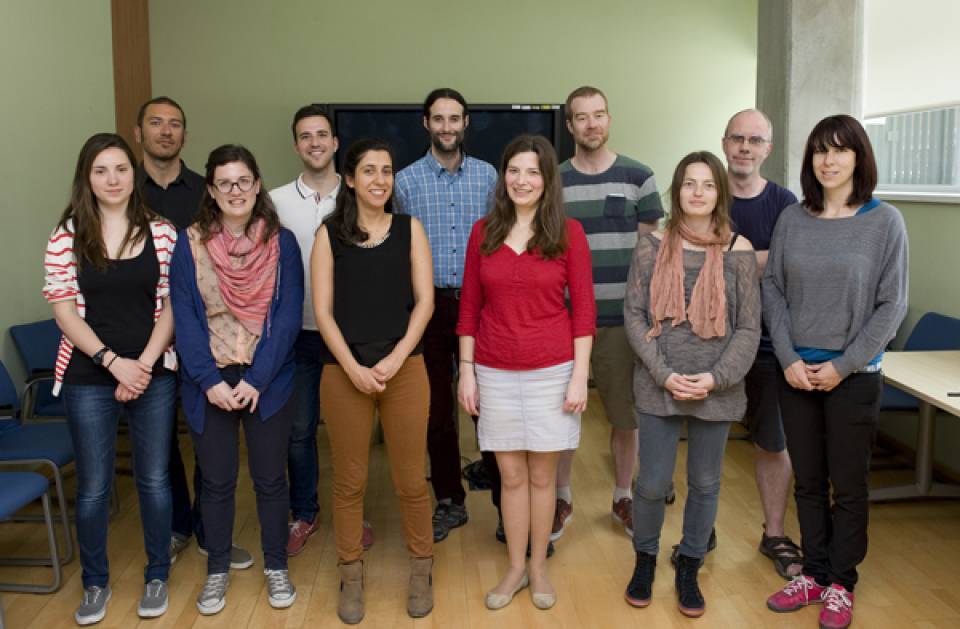In 2001, after completing the sequence of the human genome, scientists realized that knowing the complete DNA sequence did not allow them to understand its role and how the same gene sequence could give rise to the multiple cell types that make up the body. From there arises the importance of studying the epigenome, which is anything that alters the expression of genes without changing the DNA strand. It is "like the software that control the genome functions, which in this case would represent the hardware", explains Dr. Iñaki Martín-Subero.
The article published in Nature Genetics deepens in the epigenetic processes that occur during B lymphocytes maturation and demonstrates that the human epigenome is much more dynamic than it was previously thought: in the normal process of maturation of these cells the epigenome changes in a 30%, affecting several million regions of the genome. "This may be the the reason why a single genome can generate the large numbers of cells with different functions that make up our organism", remarks Dr. Martin-Subero.
The study also shows, unlike what has been published to date regarding DNA methylation, the main epigenetic mechanism, that only a small proportion of changes in the degree of methylation are related to gene expression. In this sense Martin-Subero explains that "it seems that methylation is the process printing the history in cells’ DNA, from their original stage as a stem cell until they are completely differentiated. This process tells us about which parts of the genome have essential functions for the lymphocytes maturation, about how much they have proliferated during this process and also about their cellular age".
New approach in cancer epigenetics
Furthermore, this new study has revealed that more than a half of epigenetic changes believed to specific of tumor cells are also observed in long-life blood cells. This unexpected finding challenges the current models of cancer epigenetics. "We have found an epigenetic signature in long life lymphocytes that was previously only associated with cancer cells. This article proposes a new integrative model in which cellular longevity, whether it occurs in the context of cancer, aging or healthy cells, is associated with similar epigenetic features”, explains Martin-Subero.
This work has been coordinated by IDIBAPS and UB, and have participated laboratories in Barcelona, Madrid and Pamplona, and institutions and researchers from Germany, France, Netherlands, United Kingdom, United States and South Korea. To decipher how the epigenome changes when cells mature, the participation of the National Center for Genome Analysis (CNAG) in Barcelona has been essential. According to Dr. Ivo Gut, Director of CNAG, "this study has required the application of advanced mass sequencing techniques and the development of new analysis methods”. Dr. Marta Kulis, UB researcher and first author of the study, explains that, “the data analysis was a real challenge: it has taken us three years to perform the experiments and extract all the information within the huge amount of generated data".
The study breaks new ground in the study of the immune system cells, aging and cancer and offers the scientific community a new tool with implications for both basic and translational research. Dr. Elias Campo, Research Director at Hospital Clínic, UB Professor and co-author of the study, stresses that "the greatest contribution of this work is that it provides a new vision that links normal cell maturation and cancer and changes the way we perceive the epigenome of this disease”.
The Blueprint Project
The study is part of the Blueprint project, the contribution of the EU to the International Human Epigenome Consortium. With an investment of 30 million euros, is responsible for generating at least 100 reference epigenomes of healthy people’s blood cells and of those with different associated diseases such as leukemias, lymphomas or autoimmune diseases. The team of Drs. Martin-Subero and Campo is responsible for generating the epigenome of B lymphocytes and of several types of cancers derived from this cell type.
Article reference:
Whole-genome fingerprint of the DNA methylome during human B cell differentiation
Marta Kulis, Angelika Merkel, Simon Heath, Ana C Queirós, Ronald P Schuyler, Giancarlo Castellano, Renée Beekman, Emanuele Raineri, Anna Esteve, Guillem Clot, Núria Verdaguer-Dot, MartíDuran-Ferrer, Nuria Russinyol, Roser Vilarrasa-Blasi, Simone Ecker, Vera Pancaldi, Daniel Rico, Lidia Agueda, Julie Blanc, David Richardson, Laura Clarke, Avik Datta, Marien Pascual, Xabier Agirre, Felipe Prosper, Diego Alignani, Bruno Paiva, Gersende Caron, Thierry Fest, Marcus O. Muench, Marina E. Fomin, Seung-Tae Lee, Joseph L. Wiemels, Alfonso Valencia, Marta Gut, Paul Flicek, Hendrik G. Stunnenberg, Reiner Siebert, Ralf Küppers, Ivo G. Gut, Elías Campo & José I. Martín-Subero.
Nature Genetics. DOI:10.1038/ng.3291

